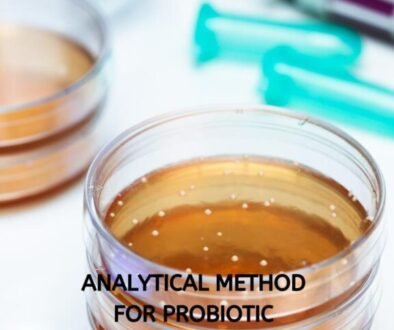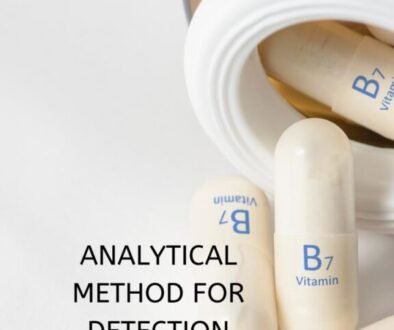
Vitamin premixes play a vital role in ensuring that animals, humans, and even crops receive the proper nutrients for optimal health. Whether it’s in animal feed, fortified food products, or dietary supplements, accurate detection of vitamins in these premixes is crucial. In this blog, we will explore the different methods used to detect vitamins in premixes, helping you understand the significance of each method and how they work.
What is a Vitamin Premix?
A vitamin premix is a carefully measured blend of vitamins, minerals, and other nutrients. These premixes are added to animal feed, food, or supplements to ensure that the nutritional needs of the consumers are met. They are vital in both animal health and human nutrition.
For example, in animal feed, vitamin premixes can help ensure the proper growth and development of livestock. In human nutrition, these premixes are used in food fortification programs, addressing common vitamin deficiencies.
Given the importance of these premixes, it’s essential to monitor and verify their composition using accurate analytical methods.
Why is Vitamin Premix Detection Important?
Ensuring the correct balance of vitamins in premixes is crucial for several reasons:
- Quality Assurance: Detecting the right amount of vitamins helps maintain the quality of the final product.
- Regulatory Compliance: Many countries have strict rules about how much of each vitamin can be included in animal feed, food, or supplements.
- Consumer Health: Precise detection ensures that consumers receive the right nutritional benefits without any risks from too much or too little of a vitamin.
Common Analytical Methods for Vitamin Premix Detection
Several analytical techniques can be used to detect and measure vitamins in premixes. Let’s look at some of the most common and widely used methods.
1. High-Performance Liquid Chromatography (HPLC)
HPLC is one of the most reliable methods for detecting vitamins in premixes. This technique separates the different components of a mixture by using a special column and a liquid solvent. The vitamin components are then identified based on how they interact with the column material.
Why use HPLC?
- It’s highly accurate.
- It can detect both fat-soluble (like vitamin A and D) and water-soluble (like vitamin B and C) vitamins.
- It’s perfect for analyzing complex mixtures where many ingredients are combined.
2. Spectrophotometry
Spectrophotometry is another popular method for detecting vitamins. It works by measuring the amount of light a sample absorbs at specific wavelengths. Each vitamin absorbs light differently, making it possible to identify and measure each one.
Why use Spectrophotometry?
- It’s simple and cost-effective.
- It provides quick results.
- It’s especially useful for detecting water-soluble vitamins like vitamin C and some B vitamins.
3. Liquid Chromatography-Mass Spectrometry (LC-MS)
LC-MS combines two powerful techniques: liquid chromatography (to separate the vitamins) and mass spectrometry (to measure their exact molecular weight). This combination provides highly sensitive and precise detection of vitamins, even in very low concentrations.
Why use LC-MS?
- It’s extremely sensitive, detecting even tiny amounts of vitamins.
- It can handle complex premixes with many different nutrients.
- It allows for simultaneous detection of multiple vitamins in one test.
4. Enzyme-Linked Immunosorbent Assay (ELISA)
ELISA is an immunoassay technique that uses antibodies to detect specific vitamins in a sample. It’s often used to detect water-soluble vitamins like vitamin B12 and folic acid.
Why use ELISA?
- It’s quick and easy to perform.
- It doesn’t require expensive equipment.
- It’s highly specific to particular vitamins.
5. Titrimetric Methods
Titrimetric methods involve adding a known quantity of a reagent to the sample until a chemical reaction occurs. The point at which the reaction is complete is used to calculate the concentration of a specific vitamin, such as vitamin C.
Why use Titrimetric Methods?
- It’s straightforward and inexpensive.
- It’s effective for analyzing specific vitamins, especially vitamin C.
How These Methods Benefit Your Vitamin Premix Business
By using accurate analytical methods, you can ensure your vitamin premixes meet the required nutritional standards and provide the promised benefits. Here’s how these techniques can help your business:
- Consistency: Regular testing ensures that each batch of vitamin premix is consistently formulated, meeting nutritional specifications every time.
- Quality Control: Reliable detection methods help prevent mistakes during the production process, ensuring your products remain safe and effective.
- Regulatory Compliance: Different countries have specific rules for vitamin levels in animal feed, food, and supplements. Using proper analytical methods helps ensure your products comply with these regulations.
How to Choose the Right Analytical Method for Vitamin Premix Detection
When selecting the right analytical method for detecting vitamins in premixes, there are several factors to consider. The method chosen must align with the specific needs of the product and the vitamins being analyzed. Here’s a guide on how to make the right choice:
1. Type of Vitamin in the Premix
- Fat-soluble vitamins like A, D, E, and K are often detected using HPLC or LC-MS. These vitamins tend to require more precise and complex detection due to their chemical properties.
- Water-soluble vitamins such as C and B vitamins are typically easier to analyze with techniques like spectrophotometry or ELISA, which are fast and cost-effective.
2. Concentration of the Vitamin
- High concentrations: If the vitamin is present in higher amounts, methods like spectrophotometry might be sufficient for detection.
- Low concentrations: For trace amounts of vitamins, advanced techniques like LC-MS or HPLC are ideal due to their high sensitivity.
3. Sample Complexity
- Simple Samples: If the premix contains only a few ingredients, simpler methods such as titrimetry or spectrophotometry can be effective.
- Complex Samples: If the premix contains a variety of nutrients, including minerals and proteins, methods like HPLC or LC-MS that offer better separation and precision are more suitable.
4. Time and Cost Considerations
- Quick and low-cost analysis: Spectrophotometry and ELISA methods can be faster and less expensive.
- In-depth and highly accurate testing: If you’re working with a large number of complex vitamins or need extremely precise results, investing in techniques like LC-MS or HPLC may be worthwhile.
Best Practices for Vitamin Premix Quality Control
In addition to using the right analytical methods, it’s also important to follow best practices to maintain the integrity and quality of your vitamin premixes. Here are some tips to consider:
1. Regular Testing
Ensure that vitamin premixes are tested regularly throughout the production process to catch any inconsistencies or errors early on. This will help maintain the quality of the product and ensure that the correct levels of vitamins are being added.
2. Standard Operating Procedures (SOPs)
Implementing clear SOPs for vitamin premix testing is critical. These procedures should detail the steps for sample collection, testing methods, and how to interpret results. Consistency in testing leads to more reliable results.
3. Use Certified Labs
To guarantee accurate results, it’s essential to use a certified lab with the latest equipment and skilled technicians. This ensures that your vitamin premixes meet all regulatory standards.
4. Training Staff
Ensure that your team is well-trained in the analytical techniques being used. A well-informed team is crucial to prevent human error and to ensure the results are accurate and reliable.
5. Documentation and Record Keeping
Maintaining detailed records of all testing activities, including batch numbers, results, and any corrective actions taken, is important for tracking the quality of your premixes. This documentation is also vital for compliance with industry regulations.
Conclusion
Detecting vitamins in vitamin premixes is essential for ensuring quality, safety, and effectiveness in various industries like animal feed, food production, and nutritional supplements. Analytical methods like HPLC, spectrophotometry, LC-MS, ELISA, and titrimetric testing are all valuable tools in this process, each offering unique benefits.
At Rass Bio Solution, we provide advanced testing services for vitamin premixes, using the latest analytical techniques to help you ensure the accuracy and quality of your products. Contact us today to learn more about how our services can support your business and meet regulatory standards.


